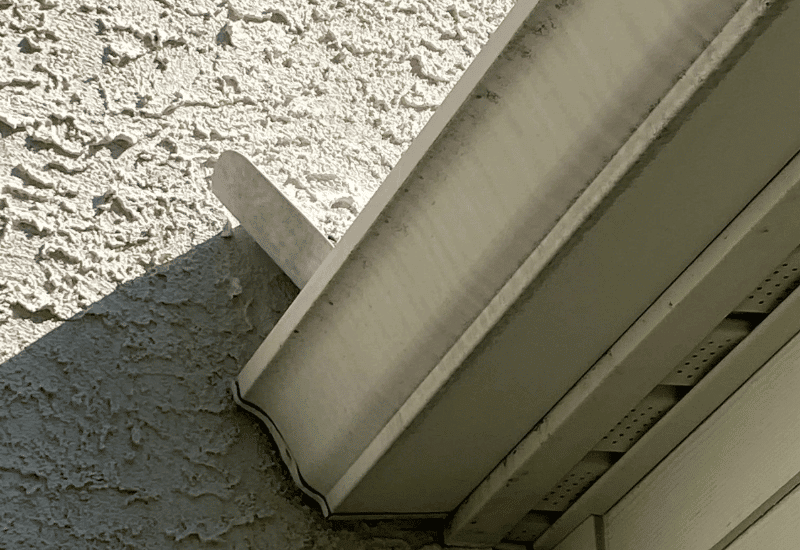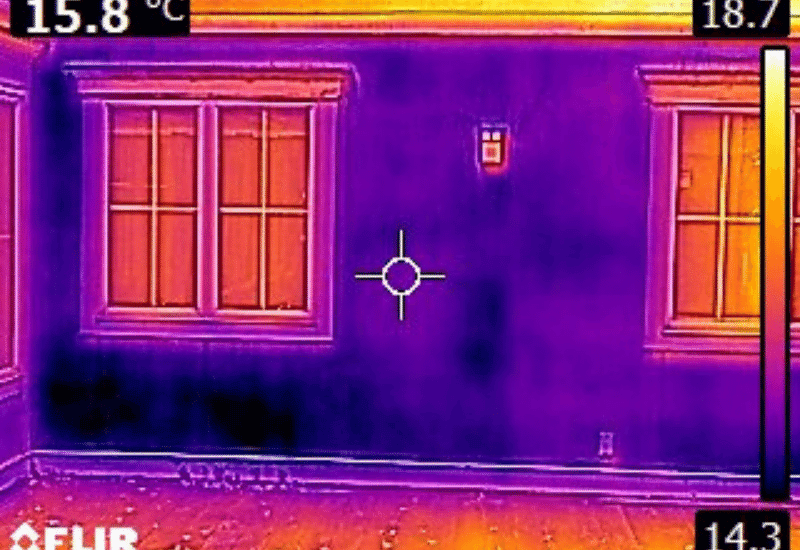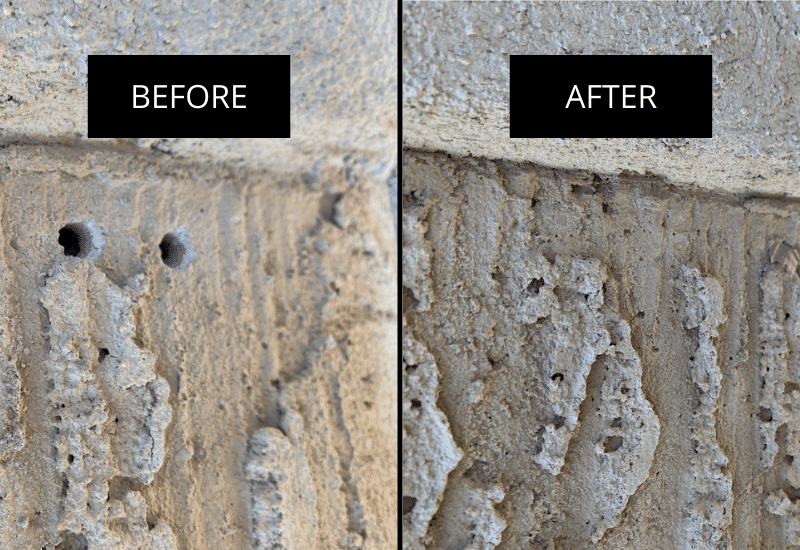What’s Involved in a Stucco Inspection?
Many people ask, “What’s involved in a stucco inspection?”
When we perform a Stucco Inspection we take a series of measurements used to determine if the stucco cladding system is properly managing moisture. It involves the following steps:
1. Visual Inspection of the Stucco System
In this step we look for obvious defects. We also look for missing components and flashings that can lead to issues behind the stucco.


2. Infrared Scan of the Stucco
The Infrared images can lead us to potential locations that have moisture accumulations. These will show up as color variations on the inspector’s screen. We add these locations to the invasive plan when detected.
3. Invasive Moisture Test
In this step we drill small holes (1/4″) and insert a moisture meter. The meter will display a moisture reading. When normal moisture is detected we seal the holes and move on. Higher moisture levels can lead to further investigation.


4. Core Sampling
A core sample is a hole about the size of a quarter. The core allows the inspector to view the substrate and either confirm that there is wet wood, or that a different condition exists. Other conditions that can exist are generally non wood based substrate types such as polyisocyanurate, extruded polystyrene, Celotex or Thermoply. Different substrate types can trigger inaccurate moisture meter readings, so it’s important to identify the material behind the stucco.
5. Holes Resealed
We inject all of our penetrations to the stucco system with a waterproof sealant. After taking core samples, we return the core to its original location. Most times, the test locations are not visible once the sealant dries because we carry many different colors to match the color of your stucco.

Your Thorough Report is Produced
We produce a high quality, easy to understand report delivered to you the following day. When needed we can provide same-day report. We are always happy to review the results with customers and their agents. Call us today to schedule or discuss your stucco inspection Stucco Safe Home
The Importance of Stucco Inspections
Stucco, a versatile and durable exterior siding material, has been used in construction for centuries. It is a popular choice for many homeowners due to its aesthetic appeal and resilience. However, just like any other material, stucco can suffer from a range of issues, including moisture intrusion and structural damages, if not properly installed or maintained. Therefore, professional stucco inspections are essential to ensure the longevity and health of stucco applications.
A stucco inspection is a detailed examination of the exterior siding of a house, specifically focusing on the stucco applications. This inspection is often part of a broader home inspection process. A professional stucco inspector, who is typically different from general contractors or typical home inspectors, specializes in identifying issues related to stucco applications. They offer expert stucco inspection services, which include visual inspections and stucco testing to identify potential problems.
Levels of Stucco Inspection
There are different levels of stucco inspection. Generally, level 1 is non-invasive, level 2 is invasive, and level 3 is destructive. For most clients, a combination of level 1 and level 2 is sufficient to gather the needed information about the health of the stucco system.
EIFS Stucco Testing
EIFS or Externally Insulated Finishing System is a kind of stucco. This is sometimes referred to as one of its brand names Dryvit. This material is made from extruded polystyrene (EPS) and a polymer coating. This material receives the same kind of stucco testing as traditional hard coat stucco.
Stucco Inspection Process
The stucco inspection process starts with a visual inspection or visual assessment of the stucco home. The inspector looks for any signs of damage or improper installation, such as cracks, discoloration, or bulges in the stucco. They also scrutinize the surrounding area, such as windows and doors, as these are common places for moisture intrusion due to improperly installed stucco.
Invasive Stucco Inspection
Following the visual inspection, the stucco inspector conducts moisture readings using a moisture probe. This device can detect moisture beneath the surface of the stucco without causing significant damage. The inspector will drill small holes in various areas of the stucco and insert the moisture probe to determine if there is any hidden moisture. This step is crucial as moisture intrusion can lead to further damage, including mold growth and structural damage.
Thermal Imaging Stucco Inspection
In some cases, especially when most stucco applications completed are suspected to be improperly installed, thermal imaging of the stucco might be employed. Thermal imaging is a non-invasive stucco testing method that uses infrared technology to detect variations in temperature. This technique can help identify areas of moisture intrusion or missing exterior insulation, which would not be visible during a visual inspection.
Stucco inspections are vital for many homeowners because they help identify potential issues before they become significant problems. For instance, early detection of moisture intrusion can prevent costly repairs and structural damages. It also protects homeowners from potential health risks associated with mold and mildew growth, which can occur due to undetected moisture.
If the stucco inspection finds any issues, the homeowner is informed, and necessary repairs can be planned. This might involve removing and replacing damaged stucco, addressing underlying moisture issues, or even a complete re-application of the stucco in severe cases. It’s also important to evaluate the cause of the problem to prevent similar issues from arising in the future.
The final Step of a comprehensive stucco inspection involves the inspector providing a detailed report outlining their findings. This report serves as a guide for homeowners or potential buyers to understand the condition of the stucco and what, if any, actions need to be taken.
Stucco Inspections
Stucco inspections are an essential service for any stucco home. They help to ensure the integrity and durability of the stucco, ultimately protecting the house and its inhabitants. If you own a stucco home or are considering buying one, a professional stucco inspector’s services are a worthwhile investment to safeguard your property and peace of mind.
